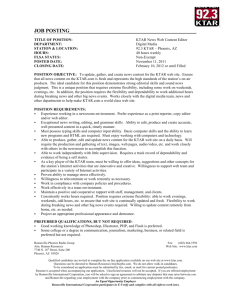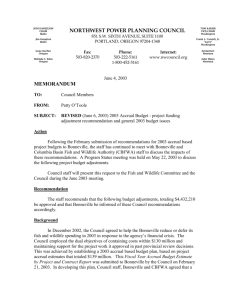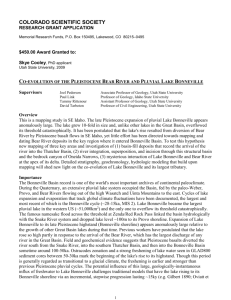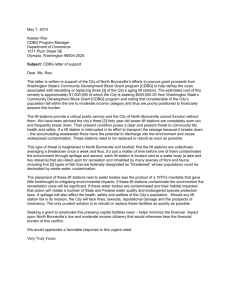GSA2010_Bonneville_Abstracts
advertisement
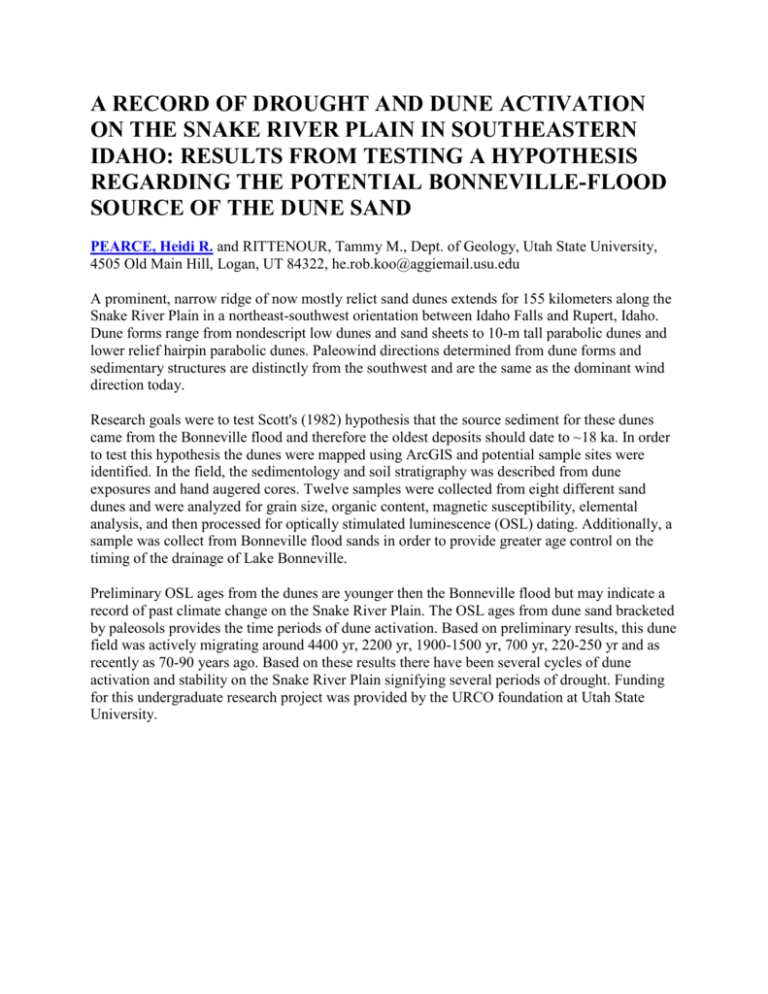
A RECORD OF DROUGHT AND DUNE ACTIVATION ON THE SNAKE RIVER PLAIN IN SOUTHEASTERN IDAHO: RESULTS FROM TESTING A HYPOTHESIS REGARDING THE POTENTIAL BONNEVILLE-FLOOD SOURCE OF THE DUNE SAND PEARCE, Heidi R. and RITTENOUR, Tammy M., Dept. of Geology, Utah State University, 4505 Old Main Hill, Logan, UT 84322, he.rob.koo@aggiemail.usu.edu A prominent, narrow ridge of now mostly relict sand dunes extends for 155 kilometers along the Snake River Plain in a northeast-southwest orientation between Idaho Falls and Rupert, Idaho. Dune forms range from nondescript low dunes and sand sheets to 10-m tall parabolic dunes and lower relief hairpin parabolic dunes. Paleowind directions determined from dune forms and sedimentary structures are distinctly from the southwest and are the same as the dominant wind direction today. Research goals were to test Scott's (1982) hypothesis that the source sediment for these dunes came from the Bonneville flood and therefore the oldest deposits should date to ~18 ka. In order to test this hypothesis the dunes were mapped using ArcGIS and potential sample sites were identified. In the field, the sedimentology and soil stratigraphy was described from dune exposures and hand augered cores. Twelve samples were collected from eight different sand dunes and were analyzed for grain size, organic content, magnetic susceptibility, elemental analysis, and then processed for optically stimulated luminescence (OSL) dating. Additionally, a sample was collect from Bonneville flood sands in order to provide greater age control on the timing of the drainage of Lake Bonneville. Preliminary OSL ages from the dunes are younger then the Bonneville flood but may indicate a record of past climate change on the Snake River Plain. The OSL ages from dune sand bracketed by paleosols provides the time periods of dune activation. Based on preliminary results, this dune field was actively migrating around 4400 yr, 2200 yr, 1900-1500 yr, 700 yr, 220-250 yr and as recently as 70-90 years ago. Based on these results there have been several cycles of dune activation and stability on the Snake River Plain signifying several periods of drought. Funding for this undergraduate research project was provided by the URCO foundation at Utah State University. NEW INSIGHTS INTO THE OUTLET CONDITIONS OF PLEISTOCENE LAKE BONNEVILLE SOUTHEASTERN IDAHO, USA JANECKE, Susanne U. and OAKS, Robert Q. Jr, Geology, Utah State University, 4505 Old Main Hill, Logan, UT 84322-4505, susanne.janecke@usu.edu Geologic, geomorphic, and geophysical analyses of landforms, sediments, and structures document a complex history of pluvial Lake Bonneville and its outlets. The lacustrine sill of Lake Bonneville shifted south from Zenda, Idaho, first 11, then 23 km during the Provo occupation. The subsequent Holocene establishment of the drainage divide at Red Rock Pass, just south of Zenda, resulted from an alluvial fan that dammed the north-sloping valley floor. Weak Late Cenozoic sediment formed the sill for all overflowing stages of the lake, including the highstand prior to the Bonneville flood. The Riverdale normal fault (landslide?) offset Bonneville deposits, but not younger Provo deposits ~25 km southeast of Zenda. We infer that rapid changes in water level may have induced slip on the Riverdale fault (landslide?) shortly before, during, or after the Bonneville flood. Although other processes may have played a role, it is possible that reservoir-induced-seismicity was the main cause of the Bonneville flood. The flood scoured ~25 km of Cache and Marsh valleys, initiated modest landslides, and exhumed a new sill near Swan Lake. Lake Bonneville dropped ~100 m and stablilized south of the Swan Lake sill at the main ~4775 ± 10 ft (1456 ± 3 m) Provo shoreline. Later Lake Bonneville briefly stabilized at a lower Provo sill (4745 ± 10 ft (1447 ± 3 m), near Clifton, Idaho, >10 km farther south. An abandoned meandering riverbed in Round Valley, Idaho shows major flow of the Bonneville River northward from this youngest sill of Lake Bonneville. Title: Did Lake Bonneville Experience A Major Water-Budget Shift At 17.4 cal ka? Authors: Oviatt, C. Affiliation: AA(Department of Geology, Kansas State University, Manhattan, KS, United States joviatt@ksu.edu) Publication: American Geophysical Union, Fall Meeting 2009, abstract #PP11D-1352 Publication Date: 12/2009 Origin: AGU AGU Keywords: [4901] PALEOCEANOGRAPHY / Abrupt/rapid climate change, [4914] PALEOCEANOGRAPHY / Continental climate records, [4942] PALEOCEANOGRAPHY / Limnology, [9350] GEOGRAPHIC LOCATION / North America Bibliographic Code: 2009AGUFMPP11D1352O Abstract Lake Bonneville, in western Utah, had transgressed to its highest level by 18.3 cal ka, overflowed into the Snake River drainage basin until 17.4 cal ka, then catastrophically dropped 100 m as its overflow threshold was washed out. This event, which is referred to as the “Bonneville flood,” is well documented geomorphically, stratigraphically, and geochronologically. At the same time the Bonneville flood was occurring, the level of Lake Estancia in central New Mexico dropped over 30 m then returned to its previous high level in an event caused by climate change in that basin. The question is: “did Lake Bonneville experience a correlative climate-induced shift in its water budget (a decrease in the ratio of input to output), even while it continuously overflowed before, during, and after the Bonneville flood?” The answer to this question has a bearing on the global effects of the climate change that is well documented in the Estancia basin. Data from sediment cores from the Bonneville basin are providing a means to address the question. Data include: ostracode faunal changes, total inorganic carbon, stable isotopes, detrital sand, and mineralogy. The challenge is to identify the measurable characteristics of the sediment core that can be used to clearly separate the effects of water-budget change from those caused by the catastrophic (essentially instantaneous) 100-m lowering of Lake Bonneville.
